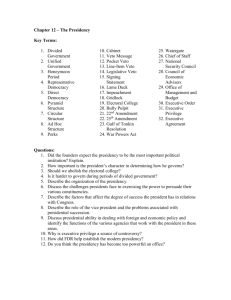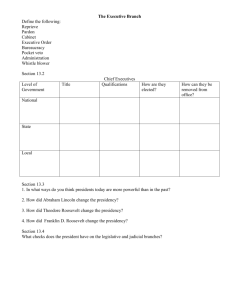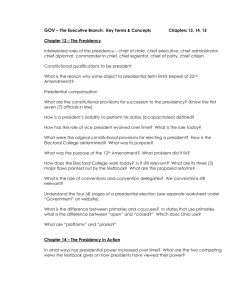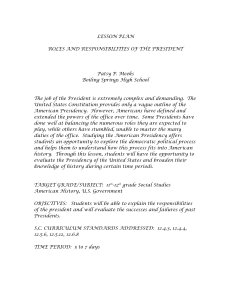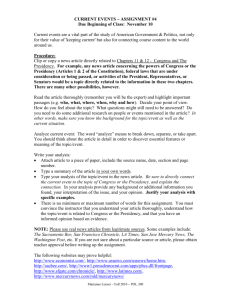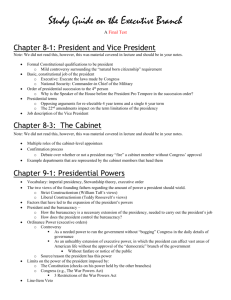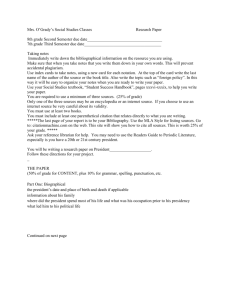Optional Chapter reading questions
advertisement
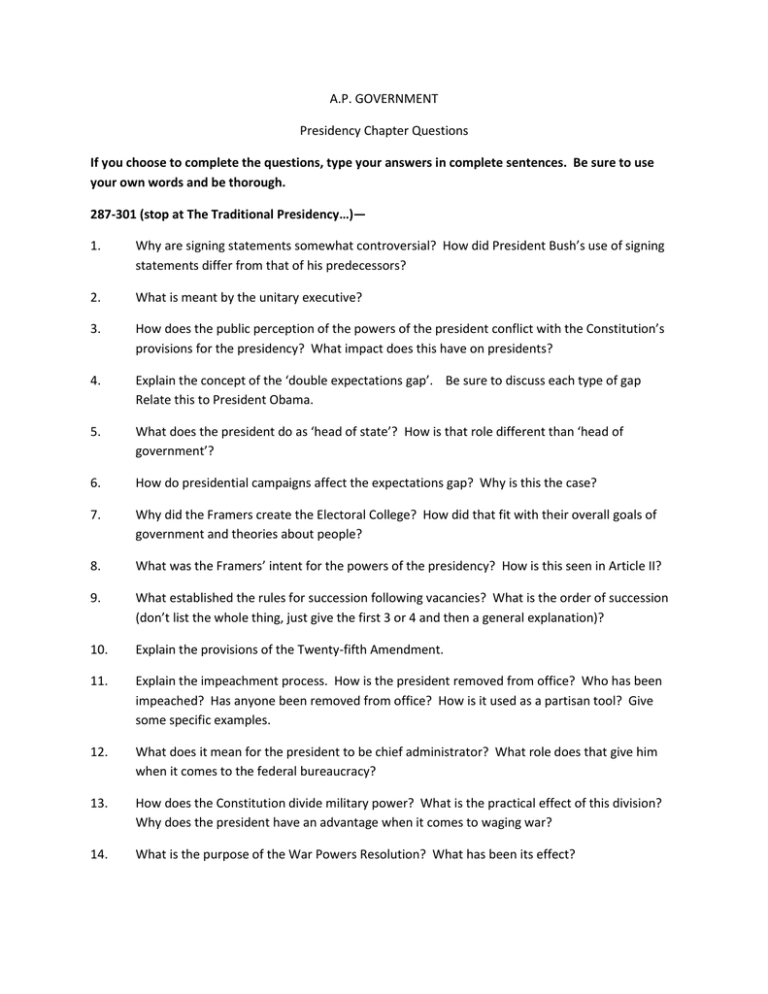
A.P. GOVERNMENT Presidency Chapter Questions If you choose to complete the questions, type your answers in complete sentences. Be sure to use your own words and be thorough. 287-301 (stop at The Traditional Presidency…)— 1. Why are signing statements somewhat controversial? How did President Bush’s use of signing statements differ from that of his predecessors? 2. What is meant by the unitary executive? 3. How does the public perception of the powers of the president conflict with the Constitution’s provisions for the presidency? What impact does this have on presidents? 4. Explain the concept of the ‘double expectations gap’. Be sure to discuss each type of gap Relate this to President Obama. 5. What does the president do as ‘head of state’? How is that role different than ‘head of government’? 6. How do presidential campaigns affect the expectations gap? Why is this the case? 7. Why did the Framers create the Electoral College? How did that fit with their overall goals of government and theories about people? 8. What was the Framers’ intent for the powers of the presidency? How is this seen in Article II? 9. What established the rules for succession following vacancies? What is the order of succession (don’t list the whole thing, just give the first 3 or 4 and then a general explanation)? 10. Explain the provisions of the Twenty-fifth Amendment. 11. Explain the impeachment process. How is the president removed from office? Who has been impeached? Has anyone been removed from office? How is it used as a partisan tool? Give some specific examples. 12. What does it mean for the president to be chief administrator? What role does that give him when it comes to the federal bureaucracy? 13. How does the Constitution divide military power? What is the practical effect of this division? Why does the president have an advantage when it comes to waging war? 14. What is the purpose of the War Powers Resolution? What has been its effect? 15. How does the president have the power to be chief foreign policy maker? Discuss specific tools he can use in making foreign policy. 16. How do executive agreements demonstrate the presidency’s growing power beyond the Constitution? 17. According to the Constitution, what legislative powers does the president have? How does Congress try to get around the veto threat? Why isn’t the president able to veto only parts of bills? 18. What is the purpose of an executive order? How have they been used to increase presidential power? Under what circumstances might a president issue executive orders? 19. In what way can a president use his judicial power to create his most long-lasting legacy? What are the limits on the president’s judicial powers? Pages 301-306 1. How did Thomas Jefferson, Andrew Johnson, and Abraham Lincoln depart from the traditional presidency? How did they justify their actions? 2. What is meant by inherent powers? 3. How did the changing character of America influence the changes in the presidency? Provide some specific examples. 4. Why would it be difficult for any president to truly decrease the power of the modern presidency? 5. What is meant by the term ‘imperial presidency’? 6. What factors or events led to calls for restraining presidential power? 7. How have Congress and the Supreme Court attempted to restrain the modern presidency? 8. In your own words, summarize the approach that the Bush-Cheney administration took to the presidency. Be sure to mention the factors that shaped their view. 9. Describe the textbook’s assessment of Obama’s approach to the presidency in comparison to Bush’s approach. Do you think this assessment is still accurate? 306-312—Due Thurs. 1/9 1. Explain the factors that affect a president’s popularity and, therefore, his ability to persuade. Be sure to discuss the factors described under ‘going public’ (use specific examples to illustrate) 2. How are the perspectives of members of congress and the president shaped by their different constituencies? 3. How does divided government affect presidents? Use examples from the Obama’ presidency to illustrate the effect.
